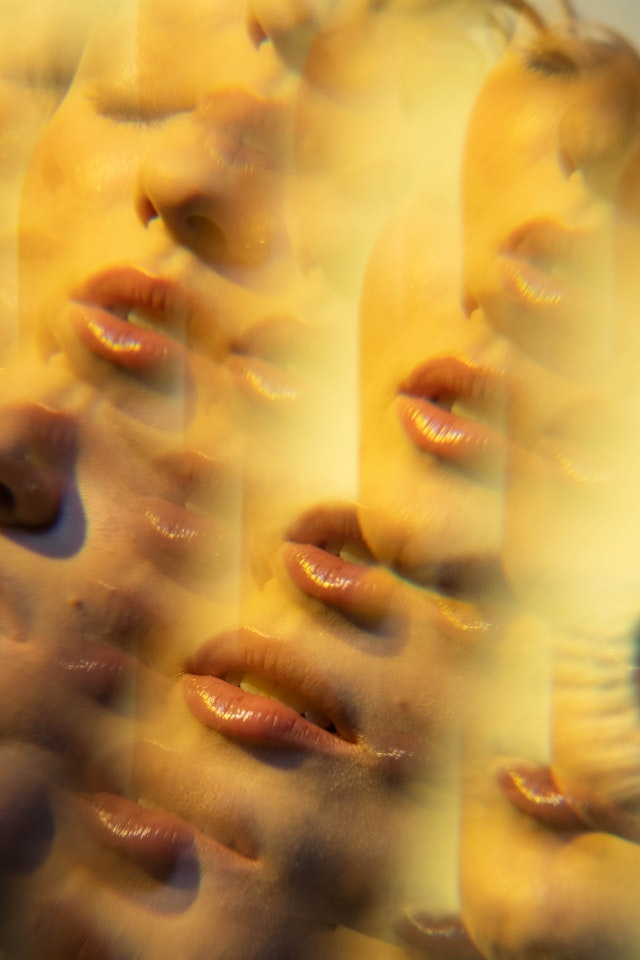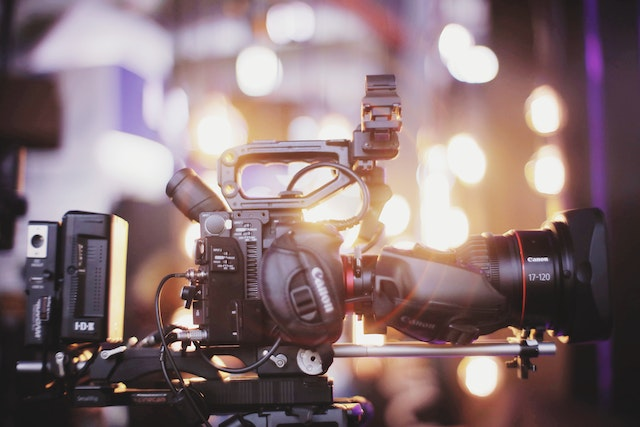
1. Introduction to Special Effects in Cinema
Special effects, commonly known as SFX, play a crucial role in the world of cinema, turning the impossible into a visually stunning reality of visual effects. From the inception of cinema to the sophisticated world of contemporary film, physical effect and optical effects have become an integral part of visual storytelling.
Special effects trace their roots back to the silent film era, where simple techniques like stop tricks created an illusion of the extraordinary. This initial foray of movie special effects marked the first steps into an industry of practical effects that has since been transformed by technological advancements, evolving from practical to digital effects.
Practical effects, including optical effects in film, dominated for many years of visual effects in movie making. Movies like ‘Jurassic Park’ used the technology of a practical effect connected with the use of electronics to animate dinosaurs and bring them to life, while motion effects created dreamy backgrounds in the ‘Star Wars saga.
The advent of digital technology marked a significant shift, opening a new world of possibilities for movie special effects and motion effects. Green screen effects replaced physical sets, while Computer-Generated Imagery (CGI) breathed life into fantastic creatures and surreal landscapes. A perfect example of this transition is the ‘Matrix’ series, with its iconic “bullet time” effect.
But the evolution of film technology and special effects doesn’t stop there. Today, filmmakers continue to push the boundaries of visual effects, experimenting with virtual reality (VR) and augmented reality (AR) technologies, opening new frontiers in the cinematic universe.
As we immerse ourselves in the magic of special effects in movies today, and they always enhance our visual experience This enables filmmakers to transcend the realms of reality and venture into the realm of the extraordinary, often requiring post-production enhancement.
Special effects, abbreviated as SFX, SPFX, or FX, are techniques in film and television visual effects that simulate impossible, dangerous, or costly-to-capture true-to-life events. They create an illusion, making viewers believe in the extraordinary and enhancing the visual storytelling experience of the film.

2. Early Beginnings of Special Effects
The origins of special effects date back to the silent film era, when pioneers like George Méliès used simple visual tricks, like the stop trick, to create fantastical narratives and great visual effects, particularly for the main character.
3. Mechanical Effects: Bringing Inanimate Objects to Life


Special effects in movies today and practical effects involve the use of machinery or physical devices to create special effects in real life. Films like ‘Jaws’ and ‘Jurassic Park’ used these visual effects to create tangible, lifelike characters that added a new layer of excitement to the storytelling process.

4. The Art of Matte Paintings and Double Exposure
Before the advent of digital technology and visual effects, filmmakers used techniques like matte paintings and double exposure to create distant landscapes or impossible scenarios. These optical effects created by the special effects technician helped filmmakers expand their creative horizons and contribute to the visual richness of the film.
5. Optical Effects: Creating Visual Illusions
Optical effects played a crucial role in the early development of visual effects and special effects. They encompass various techniques used to manipulate or alter portions of a film frame around a visual image. An optical printer, an essential tool, combined different elements into a single image.
6. Industrial Light & Magic: Pioneers of Optical Effects
Founded by George Lucas, Industrial Light and Magic revolutionized the field of special effects and visual effects. The evolution of film technology was instrumental in creating the third kind of iconic visual landscape in ‘Star Wars,’ making it one of the most influential films in cinema history, by employing post-production techniques.


7. Transitioning to the Digital Era: The Advent of CGI
Computer-generated imagery (CGI) marked a significant milestone in the world of special effects. The introduction of digital effects enabled filmmakers and special effects technician to create complex and dynamic visuals that were impossible to capture in-camera.

8. Green Screens and the Art of Chroma Keying
The use of these screens has become an industry standard in modern filmmaking. They involve filming actors against a green background, which is then replaced with different backdrops in post-production, allowing filmmakers to create any setting they envision.
9. Miniature Models: A Touch of Reality
Despite the rise of digital effects small models still hold a crucial place in the creation of special effects. These scaled-down models are often combined with live-action footage, creating a seamless blend of reality and imagination on screen.


10. Harnessing the Power of Computer-Controlled Camera Rigs
The evolution of film technology in recent years, and the use of computer-controlled camera rigs has increased. These complex machines allow precise capturing of motion by the special effects technician, making the shooting process more efficient and giving filmmakers more control over their final output.
11. Special Effects in Science Fiction: Constructing New Realities
The genre of science fiction has always pushed the boundaries of imagination. Special effects have been instrumental in creating believable extraterrestrial landscapes, dystopian futures, and outlandish creatures that define these films.


12. The Evolution of Special Effects in Fantasy Films
These films often transport viewers to magical realms and epic adventures. The ‘Harry Potter series, ‘The Lord of the Rings,’ and ‘The Dark Knight series have showcased the potential of special effects, from creating mythical creatures to intricate magical spells and larger-than-life battles, which often require post-production involvement.

13. The Magic of Stop-Motion Animation
Stop motion is a timeless technique in special effects that involves manipulating physical objects and photographing them one frame at a time. Movies like ‘King Kong’ and ‘Nightmare Before Christmas’ have used this technique to great effect.
14. The Integration of VR and AR in Film
Virtual Reality (VR) and Augmented Reality (AR) technologies are becoming more prevalent in filmmaking, offering immersive experiences that push the boundaries of traditional storytelling. These technologies unlike other forms not only offer a new dimension of visual experience but also influence how stories are told and perceived.

15. Recognition for Special Effects: The Academy Awards
The Academy Awards have long recognized the contribution of special effects to cinema. Categories like Best Visual Effects and science fiction highlight the technical artistry behind these elements that significantly enhance storytelling, film dates, and audience immersion.

16. Blending Live-Action with Digital Enhancements


In many modern films, live-action sequences accompanied by a sound effect influence are enhanced with digital compositing postproduction. This combination allows for a greater level of visual complexity and helps filmmakers bring their most ambitious visions to life even in a short film
17. Practical Special Effects: Not Just a Thing of the Past
Despite the rise of digital technology, filmmakers still use practical effects. These effects provide a tangible, real-world element that digital effects can sometimes lack, giving a sense of realism to a distant object and even the most fantastical narratives.
18. The Impact of Special Effects on Audiences
Special effects play a vital role in making audiences feel part of the film’s universe. Movie special effects such as sound effect can create an immersive environment that transcends the boundaries of the screen, providing a unique cinematic experience that engages viewers on a deeper level.


19. The Future of Special Effects in Film
The evolution of special effects in film has been marked by constant innovation and experimentation. As technology continues to evolve, filmmakers and the visual effects supervisor will have even more tools at their disposal to create complex visual narratives that were once thought impossible.
20. From Practical to Digital: A Spectrum of Techniques
Mechanical Effects
Mechanical effects represent one of the earliest forms of special effects in movies. These effects often include the use of physical devices or machinery to create motion or other effects. From the robotic Jaws shark to the dinosaurs’ animatronics in ‘Jurassic Park,’ these effects have provided filmmakers with creative freedom, allowing them to bring real-life tangible aspects to their cinematic creations.

Optical Effects
The history of optical effects is rich and varied. Techniques like matte paintings, and composite images allowed filmmakers to create distant objects and fantastic landscapes long before the age of computers. The optical printer was a crucial tool for combining different elements into a single image.
The original ‘Star Wars trilogy, for example, made extensive use of optical effects, including composite image paintings, to craft distant galaxies. Magic (ILM), founded by George Lucas, played a crucial role in pioneering these techniques.
21. Digital Worlds and Modern Filmmaking
With the advent of computer software, digital effects, and the computer-controlled camera rig filmmakers were no longer limited by the constraints of physical reality. The shift from practical special effects to digital allowed for even more intricate visual storytelling and stunning visuals.
The ‘Matrix series with its famous “bullet time” effect or ‘The Dark Knight Rises’ with its collapsing cityscapes showed how digital worlds could be constructed to serve the narrative. These films are among the most influential, showcasing how far the use of a digital effect has come.
22. Miniature Models and Green Screens
These models continue to play a vital role in special effects. Films like ‘King Kong’ and ‘The Lord of the Rings combined with live-action footage, create a seamless blend of real and artificial elements.
These screens have become a fundamental tool in post-production, replacing the background with various digitally created landscapes or scenarios. This technique involves placing actors in front of a green screen and then replacing that green with any desired background.
23. Academy Award Recognition
Special effects and existing effects technology have not only enchanted audiences but have also been acknowledged by the prestigious Academy Awards. Films like ‘Terminator 2: Judgment Day,’ ‘The Curious Case of Benjamin Button,’ and ‘The Perfect Storm’ have won accolades for their groundbreaking special effects cinematography.
24. The Future of Special Effects
In the motion picture industry, many filmmakers continue to push the boundaries of what’s possible, blending live-action films with digital enhancements. The integration of virtual reality (VR) and augmented reality (AR) offers a new frontier in special effects in movies, further blurring the lines between the audience’s real world and the fictional universes on screen.
Many studios are investing in computer-controlled camera rigs that allow for 0/1–2 precision in capturing complex motion and creating atmospheric effects that make the audience feel a part of the film’s universe. From short films to blockbuster hits, the techniques have evolved, but the goal remains the same: to create movie magic that transcends the ordinary.
Conclusion
From the first instance of the stop trick to the complex visual tricks in modern fantasy films, special effects in movies have continually evolved, offering endless possibilities for creative expression.
Special effects provide a window into worlds that exist only in the imagination, whether through the practical application of mechanical effects, the artistry of matte shots, or the creation of digital worlds using green screens and computer software.
As many filmmakers and studios push the boundaries of what is possible, one thing is clear: the curious case of special effects in movies and the role of the visual effects supervisor is far from over. Whether it’s the live special effects that place actors in otherworldly settings or the perfect storm of techniques that converge to create a masterpiece, the future of film promises even more innovation, artistry, and awe-inspiring experiences.
So, sit back and enjoy the ride as movies continue to transport us to distant galaxies, introduce us to main characters that defy reality, and offer glimpses into fantastical realms that exist only in the minds of those who dare to dream.
From the earliest days of cinema to the high-tech world of today’s film industry, special effects in movies have continually evolved and expanded, providing filmmakers with the tools to create awe-inspiring visuals. As we look forward to the future of cinema, the magic of special effects promises to continue captivating audiences worldwide, transporting us into new worlds, and telling stories in ways we’ve never seen before.
That concludes our exploration of the evolution and impact of special effects in film. Here’s to the continued magic of cinema!

